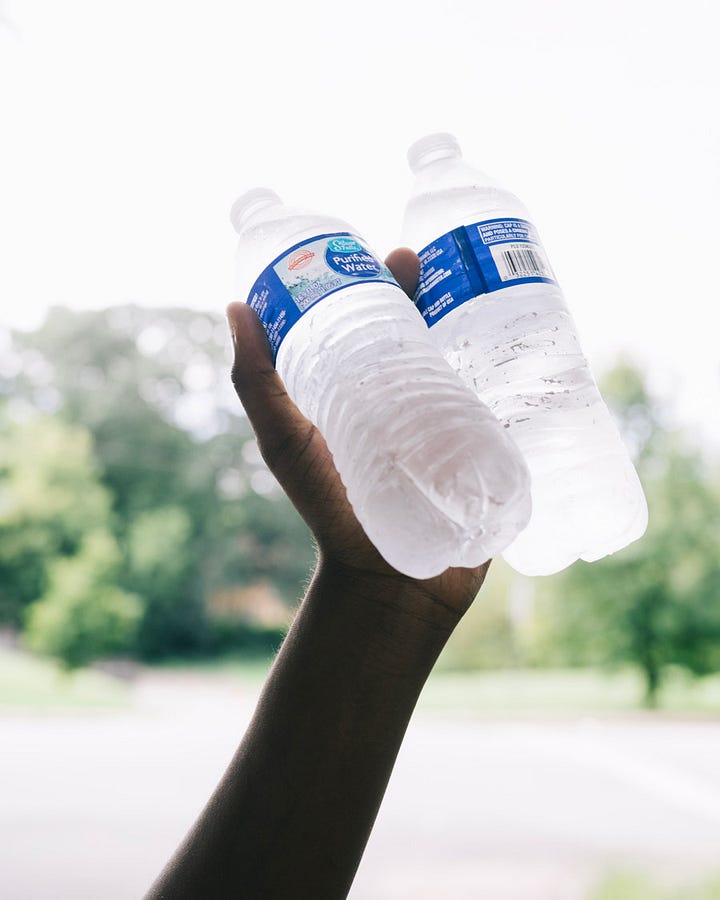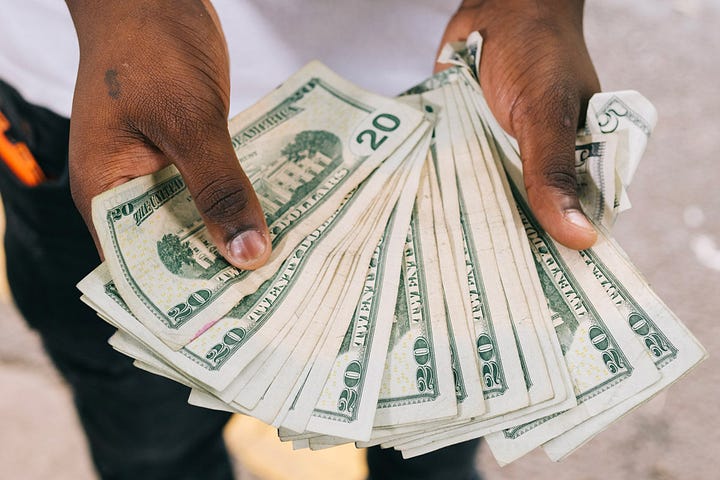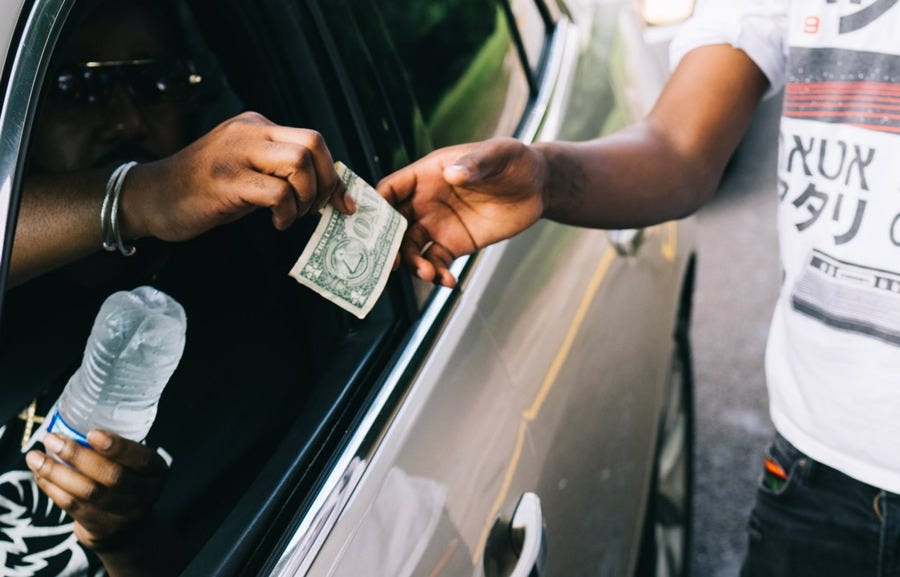When the Water Runs Dry
Atlanta’s water boys are doing what they have to do to survive. The city’s response says more about its limits than theirs.
The water boys come with the sun, like perennials. Little brothers in skinny jeans and beat-up sneakers, with eyes that say they’ve already seen more than they should. Darting through traffic with bottles so cold they sweat in your hand before you can twist the cap. A dollar, they say—sometimes with a smile, sometimes not. Depends on the day. Depends on how many folks already told them no.
They work the intersections. Some alone. Some in crews. Some with younger brothers watching from the sidewalk. They’ll learn the hustle firsthand and join when they can, or must.
Back in 2020, things went sideways. A boy, fourteen, flashed a gun. Tired of hearing “no,” I suppose. Another kid, same thing. Then Jalanni Pless, eighteen, caught a bullet from another teen. Beef over water. Gone before anyone could stop it. Gone before anyone really asked why.
That’s all it took. The city called it dangerous, a crisis. And the same boys folks used to smile at in the rearview now looked like trouble.
The opponents of the water boys speak of safety and order. They say the right things. They don't say that poor Black children frighten them. They frighten them because the driver can’t imagine what it's like to be a Black boy with nowhere to go but forward. That combination of need and ability is what strikes fear.
To be that boy is to wake up already behind, already suspect. To know that if you’re loitering if you stand still too long and running if you move too fast. It’s to be thirteen with a grown man’s burdens, fourteen with no margin for error, fifteen and already counted out—broke, not broken.


If this sounds familiar, it should. The water boys are just the latest installment in a long, low-budget horror film: The System vs. the Black Child Who Dares to Feed Himself.
The water boys in Atlanta today and the young men who sold crack in the 1980s and ’90s are not the same. But they are kindred—two generations separated by time, technology, and drug policy, bound by a shared inheritance: systemic neglect, economic exclusion, and the need to make a way where none was made for them.
And lest we forget Atlanta’s 29 Black children, teens, and young adults—mostly boys—gone between 1979 and 1981. Gone from bus stops, corners, car washes, and parking lots. Hustlers, some called them. Not in the pejorative sense, but because they moved how they had to: running errands for change, selling car air fresheners, doing whatever it took to bring something home.
Most were poor. All were Black. Many were last seen entering a stranger's car.
It’s the same story. Just a new summer.
In 2022, the City of Atlanta brought back an old idea. A youth employment program. Seasonal. Modest. Meant to give kids something to do in the summer. Mayor Andre Dickens called it the cornerstone of his vision. The relaunch came with new branding and broader ambition. It wasn't just a summer job. It was a strategy.
By 2023, the city declared it the Year of the Youth. There were announcements. Press releases. A pledge to expand opportunity. More than five thousand youth were employed. The city pointed to a drop in youth crime and to over twenty million dollars in related investments. The message was clear: This was a policy that could work.
The program reached a new peak last summer. More than 6,000 young people registered and more than 5,700 secured jobs. They earned an average of $17.70 an hour. Orientation included workplace basics, but also more: de-escalation, conflict resolution, how to maintain professionalism under pressure. These are lessons built for children who are already expected to behave like adults.
The city called them in. Thousands of boys and girls, some with the smell of bus rides still on them, braids tight and heads high, still learning how to smile like they mean it. It gave them hours to fill and checks to bring home. It gave them something, even if only for a season.
There was money, real money, that could buy groceries or pay a phone bill. There was a name on a paycheck. There was a start date, and an end date that did not coincide with jail or death or disappearance. That, too, matters.
A few will find something more: a mentor or door held open, a chance that leads somewhere. Others will return next year for another job, another shot. The act of returning means they are still here and still trying.
In a country like this one, inside a system like this, that may be as much as any government can give. At least, you learn not to expect more. Not for children born into scarcity, pinned in by zip codes, underfunded schools, and the quiet violence of low expectations.
Still, the thirst outpaces the response. There is so much need and so many more. Eleven thousand Black children—a conservative estimate—planted in the shallow dirt of poverty, walking home with red clay on their shoes. Half made it in. The others are still knocking. Some never even knew there was a door.
They do not lack ambition. They lack passwords, paperwork, printers, a parent who isn’t overwhelmed or working a double. A place to sit quietly long enough to finish the application. Some are not yet old enough. Some are too tired already.
This is not just about jobs or summer programs or city government. It’s about what we’ve accepted as normal. The real crisis is the quiet consensus we’ve made—one that treats Black children as expendable, their labor expected, their futures as optional. We’ve built cities and systems on the belief that some kids just don’t get to be kids. That poverty is personal failure. That scarcity builds character. That if they want more than the life they were born into, they should prove themselves—first. That is the root. That is the rot. The water boys are not the problem. They are the evidence.
They likely know what everyone else refuses to acknowledge out loud: that some children only survive if they learn to dodge danger like traffic, to accept hundreds of no's before a yes, and to weather the elements. Some children only survive if they learn to hustle.
So the water boys will come with the sun, like they always do. Shoulders squared. Voices loud. Hands outstretched. Hustling toward something better, even if they can’t yet name it. What they get in return is just enough nourishment to keep growing. Sometimes that is enough to last the summer, enough to make it to the next one.
And still, there’s a cruel kind of poetry to it: the boys who sell water are the ones most in need of watering. Offering relief to strangers while parched themselves. Carrying coolers through the heat with no promise of shade. They are not a crisis. They are a signal. A reflection of what we’ve refused to tend.
The question isn’t whether the water boys will be there. The question is whether we will be. Will we build a society where every child can take the summer off? Where their joy isn’t contingent on their hustle? Where we invest not just in their labor, but in their lives?
That’s the thing about perennials: They’re resilient and rooted. They don’t ask for much. Just a little water. A little light. And the chance to grow where they stand.
Donovan X. Ramsey is a journalist and author of When Crack Was King: A People’s History of a Misunderstood Era. His work on race, politics, and the criminal legal system has appeared in The New York Times, The Atlantic, GQ, and WSJ Magazine.
Recommended
Bigger than the Bottle
This is a longtime Atlanta tradition that has always sparked in-depth conversations about poverty, entrepreneurship, and the safety of teens.






